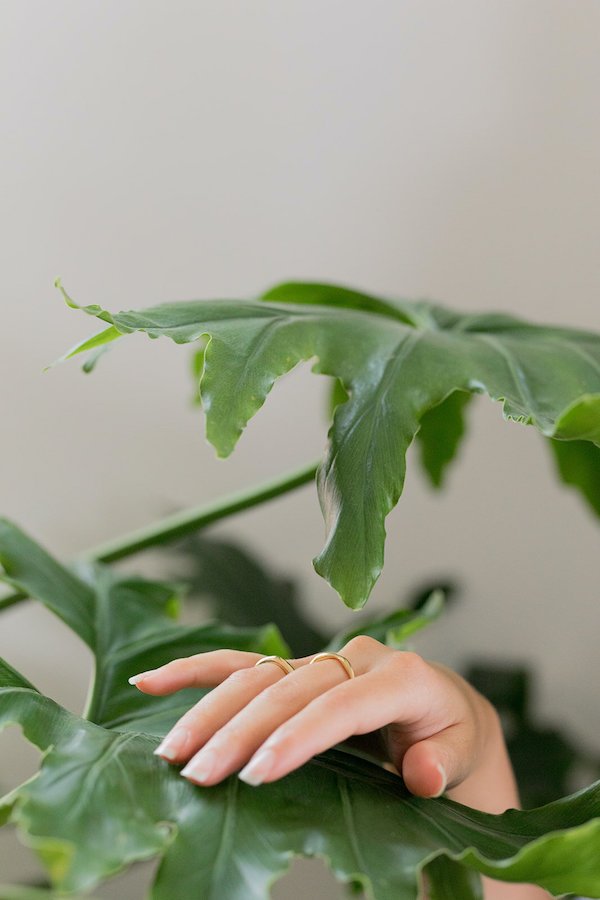
What Is Ecofeminism?
A Philosophical And Political Movement
The term ecofeminism was introduced in the 1970s to address how the oppression of women is connected to the exploitation of our planet. French feminist Françoise d’Eaubonne is credited with coining the term, as her writing explored how a “masculinist culture” created less reproductive agency for women, harmful rises in pollution, and other forms of environmental exploitation.
“It is a world [marked by patriarchal societies and capitalism] that the ecofeminist movement seeks to challenge directly.”
In many places around the world, there is a socially (and conveniently) constructed understanding that women are docile caretakers while men build, lead, and uphold society. As a child, I remember how I was often instructed to dress and play more gently, to align myself with domesticity. Meanwhile, boys in my family were allowed to identify and associate their imaginations with the excitement and complexities of any budding adventurist. They were encouraged to seek power, fulfillment, and purpose outside of the family, no matter who or what stood in their way.
But peaceful dispositions do not correlate with gender, as the authors of “Sex & World Peace” explain. The conflation that kindness and weakness are synonymous, or that there is validity to attributing those connections to specific genders, has only led to a world marked by patriarchal societies and capitalism. And it is that very world that the ecofeminist movement seeks to challenge directly.
From the beginning, ecofeminists have assessed ecological problems as a “feminist issue.” Influenced by many social movements—from second-wave feminism to anti-war and anti-nuclear stances to the green movement—it’s a testament to how deeply connected the protection of our planet is to the protection of women and other marginalized groups.
This is because women and other marginalized communities are most vulnerable to the implications of climate change and environmental exploitation. And today, ecologists and economists are unpacking the parasitical frameworks of capitalism and how these systems are dependent upon free labor and extractive practices.
“Ecofeminism helps us understand how disenfranchising women has never been a sustainable option, and the U.N. has long identified investing in women as a critical solution.”
Ecofeminism helps us understand how disenfranchising women has never been a sustainable option, and the U.N. has long identified investing in women as a critical solution. Yet, much like the devaluation of water, soil, and air, women and their traditional contributions have been belittled or dismissed.
Take women in the household as an example. They have been historically deemed “economically inactive,” despite the services of cooking, cleaning, laundry, child care—all services that unquestionably carry value when sought outside of the home, even more in a pandemic. History’s economic leaders have devalued domestic roles women have traditionally supported, even as economists admit that capitalism would not exist if women did not play this part in society.
But this inactive status ensures that women rely on men for tangible benefits, such as access to land, housing, health insurance, and safety. For mothers, this is especially challenging when we don’t build policies to support maternity leave, childcare, and early childhood education.
And then you have the vulnerability to the climate crisis. The United Nations notes that 80 percent of people displaced by climate change are women, and women are 14x more likely to die during natural disasters than men.
After Hurricane Katrina in Louisiana, Black women, particularly Black single mothers, were ignored during the recovery period. Many of them were unable to move back to their homes, leading to higher poverty rates. When Puerto Rico was devastated by Hurricane Maria, and thousands of people were displaced, women bore most of the burden. The lack of water and power made everyday tasks like cooking, sanitizing, and laundry arduous.
But Is Ecofeminism Intersectional?
Like many social and environmental movements, valid criticisms of ecofeminism have also shed light on how we’ve failed to center Black, Indigenous and People of Color (BIPOC) women and femmes when creating solutions to these problems. The ecofeminism movement of the ‘70s was a white-centered form of liberation. As white women created space to claim social, political and economic independence, BIPOC were forgotten and erased from the conversation.
The #MeToo movement is a great example. White Hollywood co-opted it from Tarana Burke and many other advocates raising awareness for Black women and femmes experiencing sexual assault. But what about Missing and Murdered Indigenous Women, Girls, and Two-Spirits (#MMIWG2S)? Where is the movement and the public outrage for them? Instagram deleted those posts and stories.
“While ecofeminism narrows in on gender, sexuality, and the patriarchy, intersectional environmentalism creates space for all social injustices, including sexism.”
But we can make ecofeminism intersectional. “While ecofeminism narrows in on gender, sexuality, and the patriarchy, intersectional environmentalism creates space for all social injustices, including sexism,” writes Leah Thomas, Founder of Intersectional Environmentalist. And it starts with acknowledging that these oppressive systems harm BIPOC the most.
We can also invest in gender equality, ensuring universal access to sexual and reproductive health rights. And we can make sure women have economic resources and opportunities to own and control land. According to National Geographic, women are the next generation of farmers and play a key role in food production. Yet, in the Global South, “only 10 to 20 percent of landholders are women, and in some parts of the world, women still cannot legally own or control land,” the article explains. Land rights and gender discrimination makes access to credit and loans difficult, and gender roles in some communities prevent women from leaving their homes to sell crops at local markets.
Finally, equal pay, comprehensive childcare options, and educational opportunities can help us rewrite social norms and create true equality.
As we go about our activism journey, let us continue learning and dismantling the inequitable societal norms. There is no one or right way to be an ecofeminist. Whatever environmental issues you feel called to focus on, you can help empower and liberate women and femmes, especially those most vulnerable.
To learn more, here are a few organizations and activists you can follow. They specifically focus on intersectional environmentalism and ensuring ecofeminism works for everyone:
Diandra Marizet is a conscious curator, community builder, writer, and founding member of Intersectional Environmentalist, where she spearheads Business + Resource Development.




